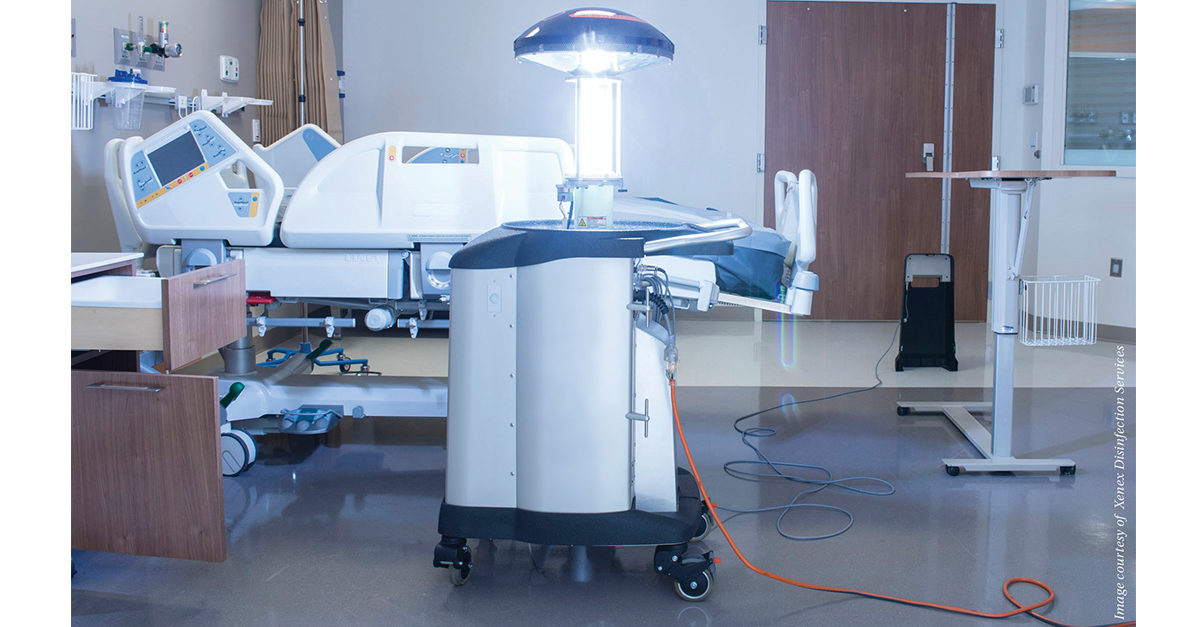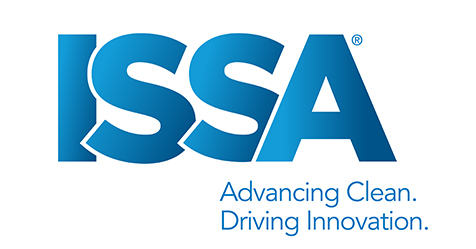While one typically goes into a hospital to get better, in some cases, a patient can leave with a very different set of problems.
During the course of their treatment, some patients will acquire additional infections, viruses, or other maladies. On any given day, one in 25 patients obtains at least one healthcare-associated infection, according to the U.S. Centers for Disease Control and Prevention (CDC).
Health care facilities, however, aren’t blithely accepting that statistic.
Contaminated surfaces, according to the Agency for Healthcare Research and Quality, can play a key role in the transmission of dangerous pathogens—including Clostridium difficile (C. diff) and antibiotic-resistant organisms, such as Methicillin-resistant Staphylococcus aureus (MRSA) and vancomycin-resistant enterococci (VRE).
Further complicating the situation, new strains of certain types of bacteria are particularly difficult to eradicate. Many bugs can survive on glass, metal, and other materials commonly found in hospital rooms—and some bacteria have a double wall that helps them resist cleaning chemicals, according to Scientific American.
To prevent the spread of infection, particularly in health care environments where patients may have weakened immune systems, maintaining a high level of cleanliness is absolutely critical.
As a result, many medical centers are utilizing new, innovative products and systems to boost and confirm cleanliness levels, combat increasingly resistant germs, and deliver a new level of service to health care facilities across the United States. These products range from disinfectant ultraviolet (UV) light to tech tools that test surface cleanliness.
Cutting-Edge Surface Treatments and Tests
In recent years, many medical centers have employed a number of treatment and cleanliness-assessment products to protect patients and ensure bacteria-free surfaces. Some, for example, use fluorescent powder or gel, which can verify whether a surface has been thoroughly cleaned, according to the CDC, helping crews learn what surfaces they may be missing during routine or special cleanings.
Elite Facility Systems—a health care cleaning and consulting company founded by CEO Tricia Holderman, a former commercial and home cleaning company owner—uses a surface-hygiene test system that detects the presence of organic residues and microorganisms to get on-site cleanliness feedback. “With swabs, we can walk to any part of any room and test it right there,” Holderman says.
In addition to cleaning products, some medical centers have begun using lasting treatments that protect countertops and other surfaces.
Robert Grajewski, president of medical device invention platform Edison Nation Medical—which has been helping to develop a bacterial management solution that aims to instantly kill bacteria or fungus on hard surfaces—says he’s seen an increased interest in medical cleaning products. The company, which helps inventors develop, test, and eventually market their product, has been approached by hand sanitizer, medical-device covering, disposable medical tool, and other cleanliness-related product creators.
Robotic and UV Cleaning Tools
Medical center cleaning crews have begun utilizing a number of new technology-based products in recent years to ensure thorough cleanliness of exam areas, operating rooms, and other treatment vicinities.
As part of their ongoing effort to eradicate germs, hundreds of hospitals have purchased bacteria-killing robots, according to Modern Healthcare magazine. The devices are so effective, the article reports, that the disinfection robot market is expected to grow from US$30 million in 2014 to $80 million by 2017.
Hackensack University Medical Center (HackensackUMC), a nonprofit teaching and research hospital located in Bergen County, NJ, bought its germ-zapping robot, nicknamed Violet, in December 2014.
According to HackensackUMC, the robot, designed to destroy viruses, bacteria, and bacterial spores lingering on surfaces, has proven to be 20 times more effective than traditional cleaning methods in killing dangerous pathogens, such as staph bacteria and C. diff, with the help of a powerful UV light.
Vice President of Hospitality Services Kunle Modupe, who previously worked at another medical facility that had a bacteria-fighting robot, helped convince HackensackUMC to bring the cleaning tool on board.
After the chief operating officer approved the $130,000 budgetary expense, the in-house cleaning staff was trained on how to use it during a two-week period; the hospital now uses the robot daily, typically in six to 15 isolation rooms and other areas.
As soon as a patient is discharged, the housekeeper enters the room, performs routine cleaning tasks, and deploys the machine. It works quickly—bathrooms take just about five minutes. Staff places a sign outside when the robot is in use, and if someone enters the room, the robot’s sensor immediately shuts it off.
The results have been positive: Swabs taken from 10 to 20 random points in each room—ranging from the telephone to the toilet flusher—have shown lower bacteria levels.
“After we use the robot, bacteria is significantly down—but we also have noticed the feedback from patients has improved since we started using the equipment,” Modupe says.
Integrating Mobile Technology
Some cleaning service providers are also utilizing handheld tech gadgets, including tablets and cell phones, to ensure all cleanliness goals are met.
More than a decade ago, Elite created a dashboard-based tracking system to monitor its cleaning teams’ progress, ranging from who clocked in at what time to how many isolation cases a certain employee dealt with on a given day.
Although the system originally involved pieces of paper employees gave to the secretary each morning, workers now use company-provided cell phones to log their work into a cloud-based system. Managers and supervisors use the data to gauge performance. “That way, even though I’m not at every account every night, I know what happened every night,” Holderman says.
The information can also be a helpful marketing aid for building service contractors to retain or grow accounts. Holderman includes performance data, such as a list of additional services performed and cleanliness-quality test results, with client invoices.
“When I send someone a bill for $100,000 a month, I want them to know what we accomplished,” Holderman says. “We want you to know we cleaned your baseboards, or washed 18 windows this month, or that the bathroom stall-door cleaning may need to be moved up to once a week. It makes you more valuable to them—and it’s a great negotiation tool.”
Cleanliness and Client Service
In addition to using the latest tech tools and treatment methods, in some cases, providing an effective level of cleanliness may involve proactively advising clients and facility managers about improvements they can make—particularly in areas that they might overlook.
Holderman, for example, suggested that one client consider getting rid of the children’s toys it kept in the waiting room, which she says can be covered in upward of 20,000 germs and are difficult to thoroughly clean individually each night.
The facility came up with a patient- and cleanliness-friendly solution: Installing stationary video game-type toys that were easier to wipe down.
Even with preemptive recommendations, medical center cleaning crews, in many ways, still face an uphill battle. As long as ill individuals seek treatment, infection will always be a risk in health care environments. “Hospitals can’t protect you every second,” Holderman says. “Germs transfer very easily.”
However, with the maximum amount of cleaning methods and protective systems in place, medical facilities can greatly reduce the chance patients—and staff members—will come into contact with bacteria.
“Preventing hospital-acquired infections is really a holistic effort,” Grajewski says. “All the tools together make a patient’s experience more safe.”



